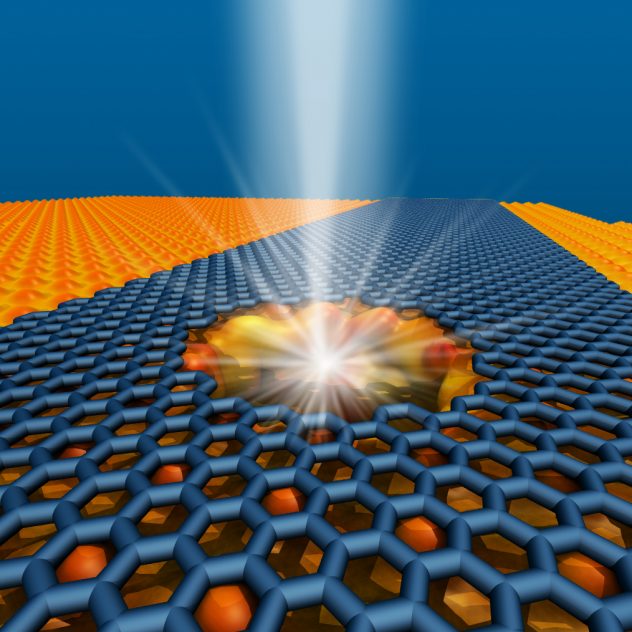Graphene-based nanopore devices are promising candidates for next-generation DNA sequencing. In this paper, we fabricated graphene nanoribbon-nanopore (GNR-NP) sensors for DNA detection. GNR conductance was monitored in situ during electron irradiation-induced nanopore formation inside a transmission electron microscope (TEM). We show that GNR resistance increases linearly with electron dose and that GNR conductance and mobility decrease by a factor of ten or more when GNRs are imaged at relatively high magnification with a broad beam prior to making a nanopore. By operating the TEM in scanning TEM (STEM) mode, in which the position of the converged electron beam can be controlled with high spatial precision via automated feedback, we were able to prevent electron beam-induced damage and make nanopores in highly conducting GNR sensors. This method minimizes the exposure of the GNRs to the beam before and during nanopore formation. The resulting GNRs with unchanged resistances after nanopore formation can sustain microampere currents at low voltages (around 50 mV) in buffered electrolyte solution and exhibit high sensitivity, with a large relative change of resistance upon changes of gate voltage, similar to pristine GNRs without nanopores.
Selected Press:
- Penn News: Penn Produces Graphene Nanoribbons With Nanopores for Fast DNA Sequencing
- ScienceDaily: Graphene Nanoribbons With Nanopores Created for Fast DNA Sequencing

